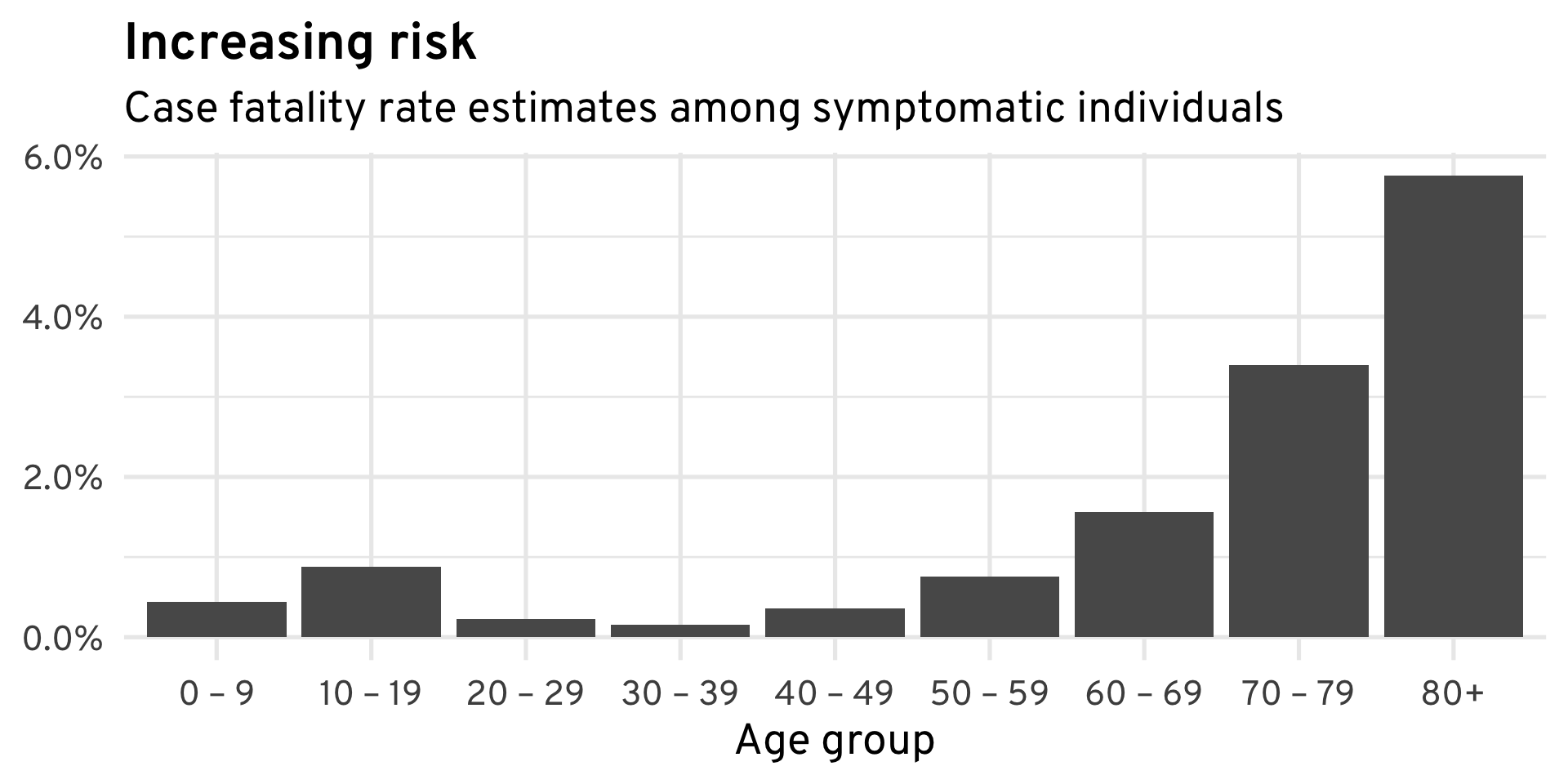
There have been a lot of numbers thrown around recently about the scope and severity of the coronavirus pandemic. As of Sunday, there are 32,000 confirmed cases in the United States. New York governor Andrew Cuomo is saying that 40–80% of the state could contract the disease. Others estimate that 30% of the U.S. population will become infected. Estimates of the fatality rate of the disease vary wildly.
There’s a lot we just don’t know, and there’s a lot that depends on how successful we are at flattening the curve through social distancing, improved testing, and other interventions.
But all of these numbers, and the uncertainty surrounding them, can obscure the one simple fact that we must all remember if we are to be disciplined enough in our social distancing: this pandemic is deadly serious, and if we don’t continue to take drastic action, at an individual and societal level, then someone you know will probably die.
The graph below shows some of our best estimates of the fatality rate of COVID-19 among people who contract the disease and show any symptoms, from a very recent paper in Nature by Wu et al.

The researchers estimate that overall, 1.4% of symptomatic patients will die, and they assume that around half of all people who are infected show no symptoms. Combining that with estimates that 30–80% of the 7.7 billion people on Earth will be infected, and we’re looking at between 21 and 43 million deaths worldwide.
What does this mean for you, personally? Fill out the boxes below.
How many people do you know in each age group?
| 0–9 | |
| 10–19 | |
| 20–29 | |
| 30–39 | |
| 40–49 | |
| 50–59 | |
| 60–69 | |
| 70–79 | |
| 80+ | |
| Total |
To reiterate, there is still a lot of uncertainty about the fatality rates and even more about how many people will eventually become infected. But if we want to minimize the scale of this global tragedy, each of us must take the disease seriously and do everything we can to follow public health guidelines.